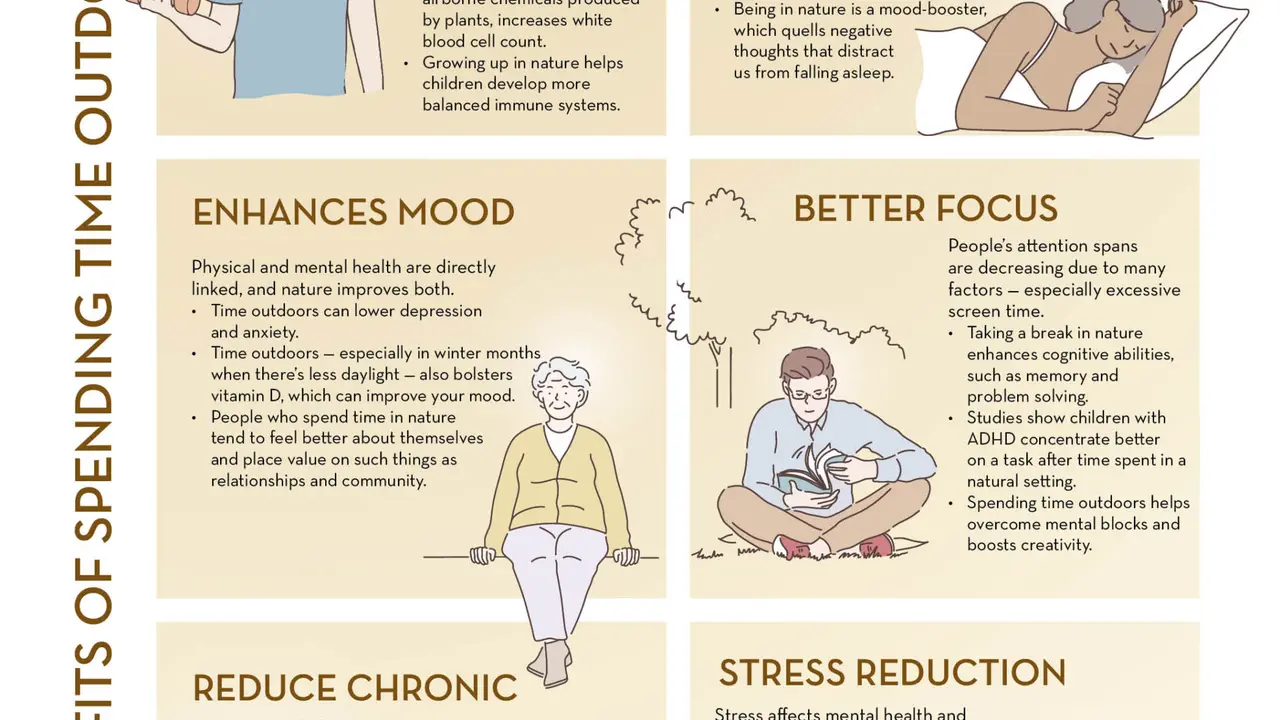Debunking Common Sleep Myths: Separating Fact from Fiction
Creating a Sustainable Lifestyle Tips for Eco-Friendly Living

Understanding Sustainable Living The Core Principles for an Eco-Friendly World
Sustainable living isn't just a trend; it's a necessity. It's about making choices that minimize our impact on the environment, ensuring that future generations can enjoy a healthy planet. But where do you even begin? Let's break down the core principles, making sustainable living feel less daunting and more doable.
At its heart, sustainable living revolves around three key pillars: environmental stewardship, social responsibility, and economic viability. Environmental stewardship means protecting natural resources, reducing pollution, and conserving biodiversity. Social responsibility involves ensuring fair labor practices, promoting social justice, and supporting community well-being. Economic viability focuses on creating economic systems that are both profitable and environmentally sound.
Think of it this way: every decision we make has an impact. From the food we eat to the clothes we wear, we're either contributing to the problem or working towards a solution. Sustainable living is about consciously choosing the latter.
Reduce Reuse Recycle Your Three-Step Guide to Waste Reduction and Sustainable Habits
The mantra “Reduce, Reuse, Recycle” is the cornerstone of waste reduction. But it’s more than just a catchy phrase; it's a practical guide to minimizing our environmental footprint. Let's dive deeper into each step.
Reduce Consumption Minimizing Waste and Making Conscious Choices
The first step is reducing consumption. Before buying anything, ask yourself: Do I really need this? Can I borrow it? Can I buy it secondhand? Overconsumption fuels waste and depletes resources. Choose products with minimal packaging, avoid single-use items, and opt for durable goods that are built to last. Support companies that prioritize sustainability and ethical production practices.
For example, instead of buying bottled water, invest in a reusable water bottle. Instead of using plastic grocery bags, bring your own reusable bags. Small changes can make a big difference.
Reuse Items Finding New Life for Old Things and Embracing Creativity
Reusing items is about finding new life for old things. Get creative! Turn old t-shirts into cleaning rags, use glass jars for storage, and repurpose cardboard boxes for shipping. Repair broken items instead of throwing them away. Host a clothing swap with friends or donate unwanted items to charity. The possibilities are endless.
Think about upcycling furniture, transforming old pallets into garden planters, or using scrap fabric to create patchwork quilts. Reusing items not only reduces waste but also saves money and fosters creativity.
Recycle Properly Understanding Recycling Guidelines and Local Regulations
Recycling is the final step in waste reduction. But it's crucial to recycle properly. Different materials have different recycling guidelines, and local regulations vary. Make sure you understand what can and cannot be recycled in your area. Clean and sort your recyclables to avoid contamination. Support recycling programs and advocate for improved recycling infrastructure.
Remember that recycling is not a perfect solution. It still requires energy and resources. The best approach is to reduce and reuse as much as possible, and then recycle responsibly.
Eco-Friendly Products Your Essential Toolkit for Sustainable Living
Switching to eco-friendly products is a simple way to make a positive impact. From cleaning supplies to personal care items, there are countless sustainable alternatives available. Here are some essential eco-friendly products to consider.
Sustainable Cleaning Supplies Ditching Harsh Chemicals for Natural Alternatives
Conventional cleaning supplies often contain harsh chemicals that are harmful to both the environment and our health. Switch to natural alternatives made with plant-based ingredients. Look for products that are biodegradable, non-toxic, and cruelty-free. Consider making your own cleaning supplies using simple ingredients like vinegar, baking soda, and lemon juice.
Product Recommendation: Mrs. Meyer's Clean Day Multi-Surface Everyday Cleaner. This cleaner is made with plant-derived ingredients and essential oils. It's biodegradable, cruelty-free, and comes in a variety of refreshing scents. Price: Approximately $4 per bottle. Use Case: Ideal for cleaning countertops, floors, and other surfaces.
Product Recommendation: Blueland Cleaning Tablets. These tablets dissolve in water to create effective cleaning solutions. They reduce plastic waste and are made with non-toxic ingredients. Price: Approximately $16 for a starter kit with three tablets. Use Case: Perfect for cleaning windows, bathrooms, and kitchens.
Eco-Friendly Personal Care Products Nurturing Your Body and the Planet
Conventional personal care products often contain synthetic fragrances, parabens, and other harmful ingredients. Choose eco-friendly alternatives made with natural and organic ingredients. Look for products that are packaged in sustainable materials and are cruelty-free. Consider switching to shampoo bars, bamboo toothbrushes, and reusable cotton rounds.
Product Recommendation: Ethique Shampoo and Conditioner Bars. These bars are plastic-free, vegan, and cruelty-free. They are made with natural ingredients and provide a luxurious lather. Price: Approximately $18 per bar. Use Case: A sustainable alternative to traditional shampoo and conditioner bottles. Great for travel.
Product Comparison: Ethique vs. Lush Shampoo Bars. Both brands offer excellent plastic-free shampoo bars. Ethique focuses on vegan and cruelty-free ingredients, while Lush offers a wider variety of scents and formulations. Ethique bars tend to be slightly more expensive. Price Range: Ethique ($18), Lush ($12-15).
Product Recommendation: Bambaw Bamboo Toothbrush. This toothbrush is made with a biodegradable bamboo handle and soft bristles. It's a sustainable alternative to traditional plastic toothbrushes. Price: Approximately $4 per toothbrush. Use Case: A simple and effective way to reduce plastic waste in your oral hygiene routine.
Sustainable Home Goods Furnishing Your Space with Eco-Conscious Choices
Furnishing your home with sustainable materials is another important aspect of eco-friendly living. Choose furniture made from reclaimed wood, bamboo, or recycled materials. Opt for organic cotton bedding and towels. Look for energy-efficient appliances and lighting fixtures. Consider buying secondhand furniture and décor.
Product Recommendation: Avocado Green Mattress. This mattress is made with organic cotton, wool, and latex. It's non-toxic, hypoallergenic, and sustainably sourced. Price: Approximately $1,400 for a queen-size mattress. Use Case: Provides a comfortable and healthy sleep environment.
Product Comparison: Avocado Green Mattress vs. Saatva Mattress. Both brands offer high-quality organic mattresses. Avocado Green focuses on natural and sustainable materials, while Saatva offers a wider range of firmness options. Avocado Green mattresses tend to be more expensive. Price Range: Avocado Green ($1,400), Saatva ($1,000-1,800).
Energy Efficiency Saving Energy and Reducing Your Carbon Footprint with Smart Technology and Practices
Reducing energy consumption is crucial for minimizing our carbon footprint. There are many ways to improve energy efficiency in our homes and daily lives. From using energy-efficient appliances to adopting sustainable transportation habits, every little bit counts.
Energy-Efficient Appliances Saving Money and Resources with Smart Technology
When it's time to replace your appliances, choose energy-efficient models that are certified by Energy Star. These appliances use less energy and can save you money on your utility bills. Consider switching to LED lighting, which uses up to 75% less energy than incandescent bulbs. Unplug electronics when they're not in use to prevent phantom energy drain.
Product Recommendation: Nest Learning Thermostat. This thermostat learns your habits and automatically adjusts the temperature to save energy. It can be controlled remotely and provides energy usage reports. Price: Approximately $250. Use Case: Reduces energy consumption and saves money on heating and cooling costs.
Sustainable Transportation Reducing Emissions and Embracing Eco-Friendly Travel Options
Transportation is a major source of greenhouse gas emissions. Consider walking, biking, or taking public transportation whenever possible. If you need to drive, choose a fuel-efficient vehicle or consider switching to an electric car. Support sustainable transportation initiatives and advocate for improved public transportation infrastructure.
Product Recommendation: Electra Townie Go! E-Bike. This e-bike provides a comfortable and convenient way to commute or explore your city. It has a long battery range and can assist with hills and headwinds. Price: Approximately $2,500. Use Case: A sustainable and enjoyable alternative to driving for short trips.
Sustainable Food Choices Eating Responsibly for a Healthier Planet and Body
Our food choices have a significant impact on the environment. From the way food is produced to the way it's transported, the food system contributes to greenhouse gas emissions, deforestation, and water pollution. Making sustainable food choices can help reduce our environmental footprint and promote healthier eating habits.
Plant-Based Diets Reducing Your Environmental Impact with Vegetarian and Vegan Options
Plant-based diets are generally more sustainable than diets that are high in meat and dairy. Plant-based foods require less land, water, and energy to produce. Consider incorporating more vegetarian and vegan meals into your diet. Experiment with new recipes and explore the diverse world of plant-based cuisine.
Tip: Start by replacing one or two meat-based meals per week with plant-based alternatives. Gradually increase the number of plant-based meals as you become more comfortable with vegetarian and vegan cooking.
Local and Seasonal Eating Supporting Local Farmers and Reducing Transportation Emissions
Eating local and seasonal foods reduces transportation emissions and supports local farmers. Visit farmers markets and buy directly from local producers. Join a community-supported agriculture (CSA) program to receive a weekly box of fresh, seasonal produce. Grow your own fruits, vegetables, and herbs in a garden or container garden.
Tip: Check out local farmers markets and CSAs in your area. Look for seasonal produce guides to learn what's in season and when.
Reducing Food Waste Minimizing Food Spoilage and Composting Food Scraps
Food waste is a major problem. It wastes resources, contributes to greenhouse gas emissions, and costs money. Reduce food waste by planning your meals, storing food properly, and composting food scraps. Use leftovers creatively and avoid overbuying. Support food waste reduction initiatives and advocate for improved food waste management policies.
Product Recommendation: Lomi Composter. This electric composter turns food scraps into nutrient-rich soil in just a few hours. It's a convenient and effective way to reduce food waste and create compost for your garden. Price: Approximately $500. Use Case: Composting food scraps and reducing landfill waste.
Water Conservation Saving Water and Protecting Our Precious Resources
Water is a precious resource that is essential for life. Conserving water is crucial for protecting our environment and ensuring that future generations have access to clean water. There are many simple ways to save water in our homes and daily lives.
Efficient Water Use Reducing Water Consumption in Your Home and Garden
Install low-flow showerheads and toilets to reduce water consumption. Fix leaky faucets and pipes promptly. Water your lawn and garden efficiently, using a sprinkler or drip irrigation system. Collect rainwater for use in your garden. Take shorter showers and turn off the water while brushing your teeth.
Product Recommendation: Niagara Earth Showerhead. This showerhead uses only 1.5 gallons of water per minute, saving water without sacrificing water pressure. Price: Approximately $20. Use Case: Reducing water consumption in the shower.
Sustainable Landscaping Choosing Native Plants and Reducing Lawn Size
Traditional lawns require a lot of water, fertilizer, and pesticides. Consider replacing part of your lawn with native plants, which are adapted to the local climate and require less maintenance. Use mulch to conserve soil moisture and suppress weeds. Avoid using chemical fertilizers and pesticides.
Tip: Consult with a local nursery or gardening expert to choose native plants that are suitable for your area.
Advocating for Change Supporting Sustainable Policies and Practices
Sustainable living is not just about individual actions. It also requires systemic change. Support sustainable policies and practices by advocating for improved environmental regulations, supporting businesses that prioritize sustainability, and voting for candidates who are committed to protecting the environment.
Supporting Sustainable Businesses Investing in Companies Committed to Environmental Responsibility
Support businesses that are committed to sustainability by purchasing their products and services. Look for companies that are certified by B Corp or other reputable sustainability organizations. Choose businesses that prioritize ethical labor practices and environmental responsibility.
Advocating for Environmental Policies Engaging in Environmental Activism and Voting for Change
Engage in environmental activism by contacting your elected officials, participating in protests and rallies, and supporting environmental organizations. Vote for candidates who are committed to protecting the environment and promoting sustainable policies. Educate yourself and others about environmental issues.
By making conscious choices and advocating for change, we can create a more sustainable and equitable world for all.
:max_bytes(150000):strip_icc()/277019-baked-pork-chops-with-cream-of-mushroom-soup-DDMFS-beauty-4x3-BG-7505-5762b731cf30447d9cbbbbbf387beafa.jpg)






